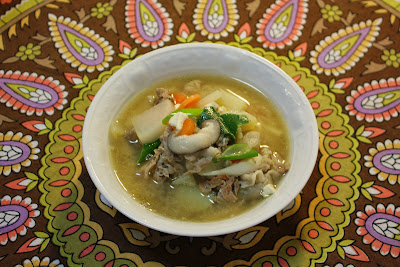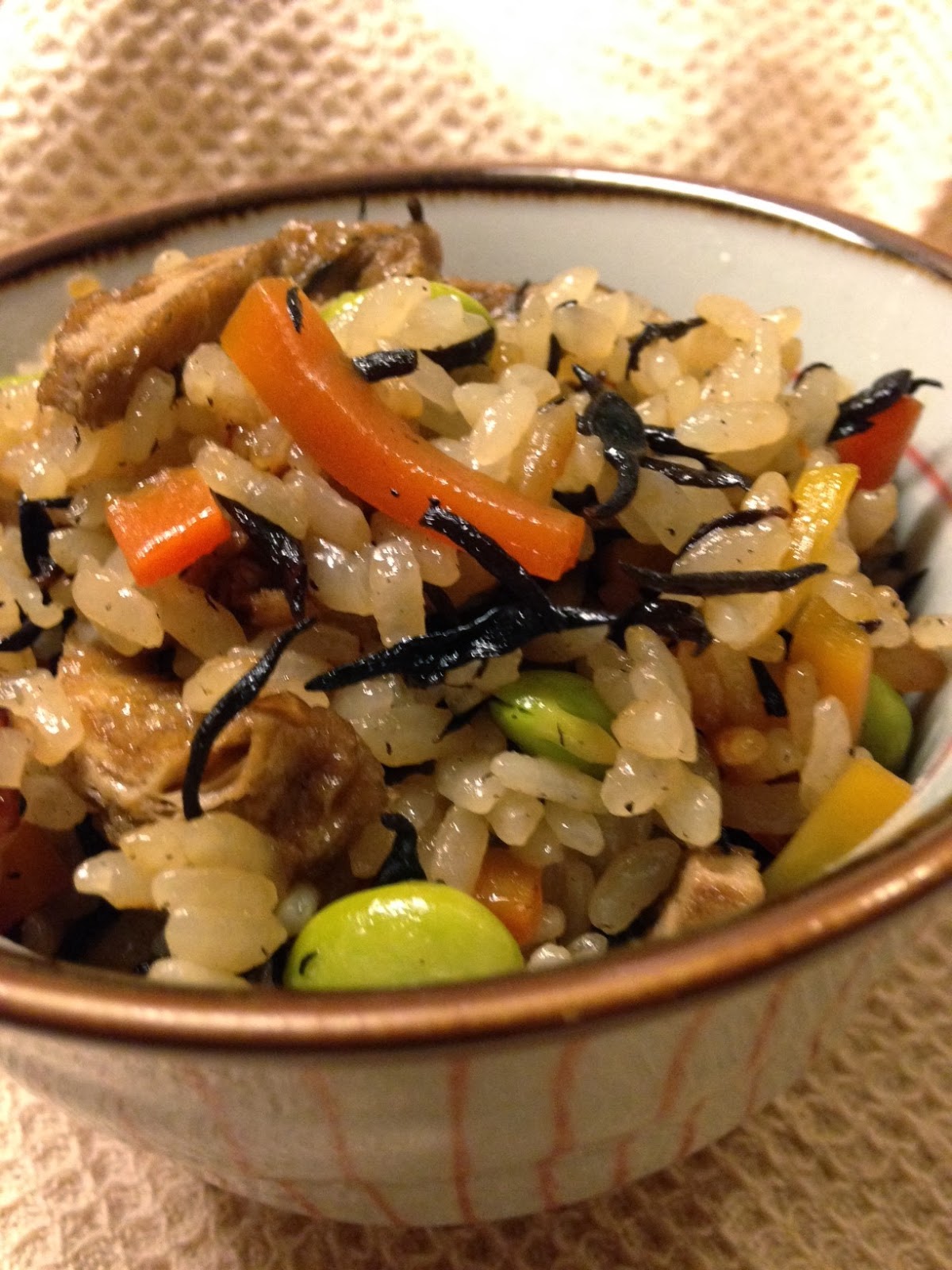Pork miso soup - Butajiru
Canola oil, for frying
200 g thinly sliced pork
1 large potato, peeled and cut into ½ cm slices
½ gobo, scraped clean and cut on the diagonal into 4 cm slices
½ large sweet potato, peeled and cut into ½ cm slices
3 taro, peeled and cut into ½ cm slices
1 large carrot, peeled and cut into ½ cm half rounds
¼ daikon, peeled and cut into ½ cm rectangular slices
4 shiitake mushrooms, stems removed, and cut into ½ cm slices
100 g block of konnyaku
4 ½ cups of water
2 ½ tsp dry dashi
3 tbsp liquid dashi
3 tbsp sake
5 ½ tbsp miso
2 tbsp soy sauce (optional)
150 g tofu, drained and cut into bite-sized cubes
1 stalk negi, cut on the diagonal into 4 cm slices
Directions
1. Peel and cut the potatoes, sweet potatoes, taro, and gobo as directed above. Some may prefer the vegetables pieces to be chunkier. If you go large, just remember to be consistent when cutting so that all ingredients cook evenly. Soak separately in bowls of chilled water for 10 minutes. Drain and set aside.
2. Rinse and drop the konnyaku in boiling water for 1-2 minutes. Drain and, once cooled, tear into bite-sized pieces. Set aside.
3. Heat oil in a large pot. Add the pork. When it has cooked through (about 4 minutes), add the potatoes, sweet potato, gobo, taro, carrots, daikon, shiitake, and konnyaku. Stir until everything is coated in oil.

4. Add water, powdered dashi and liquid dashi. Bring to a boil at high heat. Skim the foam that forms at the surface.
5. Reduce the heat and add the sake. Stir.
5. Reduce the heat and add the sake. Stir.
6. Let simmer until vegetables are tender. Add the miso. Note if you are using barley miso, push the paste through a fine mesh strainer to remove the pieces of barley. Also note that some miso pastes have higher sodium content than others. If the broth lacks salt, adjust the seasoning with soy sauce. Don’t go crazy though! You don’t want to change the color of the broth, and you shouldn’t be able to notice the flavour of the soy sauce.
7. Add the tofu and negi and let simmer for another 5 minutes.
8. Serve in deep bowls and top with thin slices of negi.
How it went down...
Well, our butajiru ended up being more stew than soup. You see my pot isn’t very large so by the time we crammed in all the veg., there wasn’t room enough for the broth. (No worries bleaders, the above measurements are good. And, I went and got myself a new pot that’ll hold enough butajiru to feed an army!)
One thing we think really enhanced the flavor of the dish was the shiitake. Originally Lou and I weren’t going to add them but, again, So was like, “What about the mushrooms?” And once we threw a few in there, it really tied everything together.
The verdict
Really great winter soup. A lot of cutting preparation at first, but the flavor payout is huge.





Comments
Post a Comment